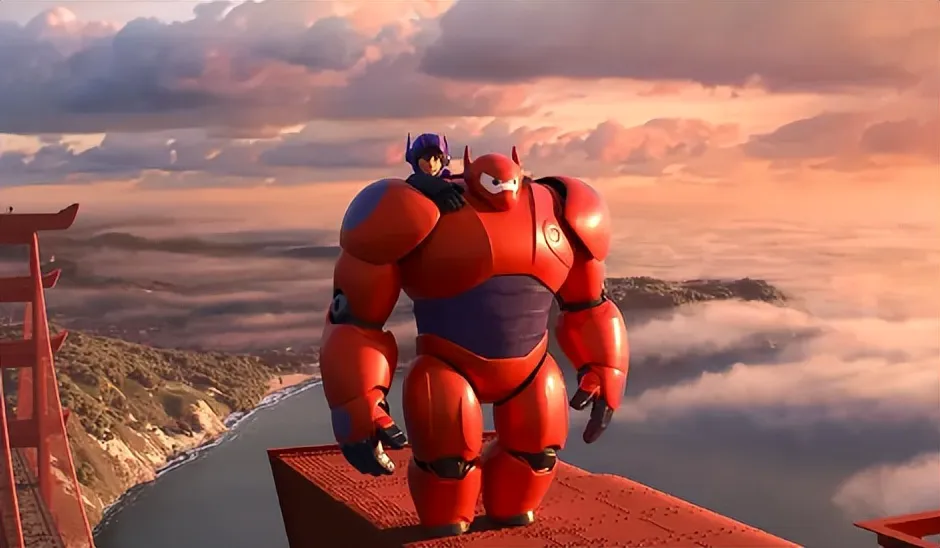The Vibrant Palette of “Big Hero 6”: A Study in Color Design
“Big Hero 6,” set in the futuristic metropolis of San Fransokyo, tells the story of Hiro Hamada, a robotics prodigy, and Baymax, a lovable healthcare companion robot. Together, they form a superhero team with Hiro’s friends to combat a masked villain.
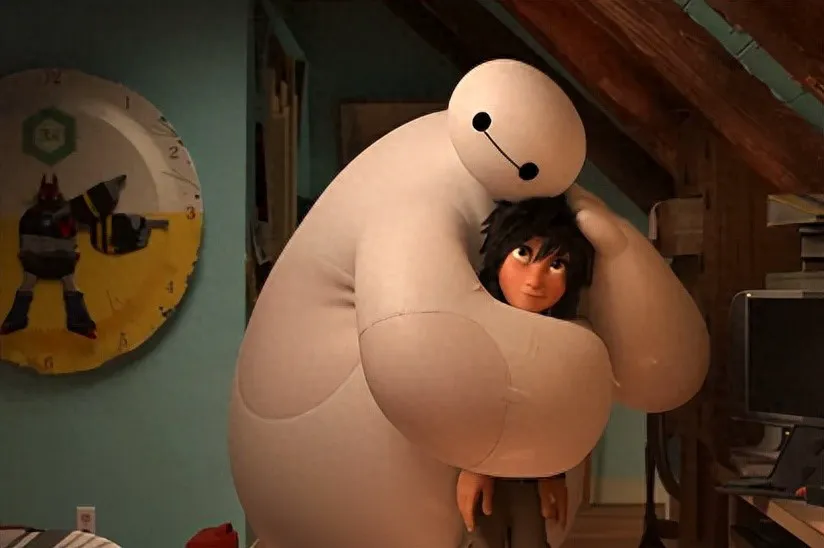
While “Big Hero 6” is an animated film, its narrative structure adheres to classic Disney storytelling: a conflict between good and evil, a protagonist’s journey of growth, and endearing characters. The film’s use of color enhances these elements, creating a visually stunning experience.
The Significance of Scene Color Design
The design of scenes is paramount in any film. Movie scenes are the foundation of the story and provide a broader space for the characters to move. The combination of colors can enrich the scene and express accurate definitions.
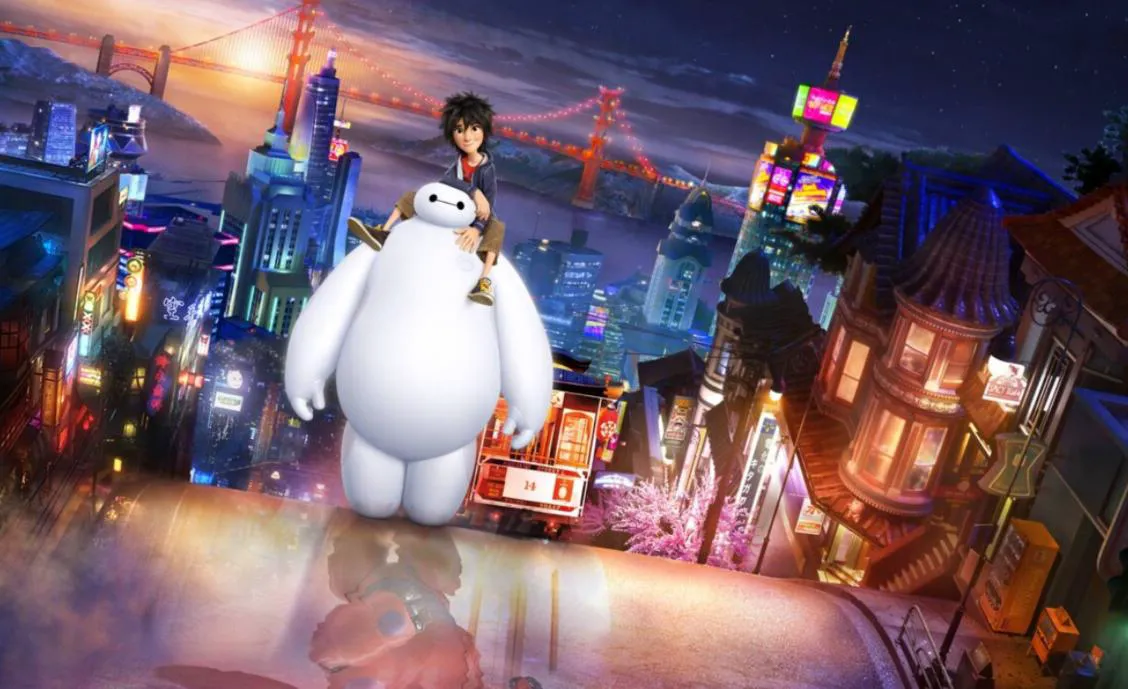
Weaving Color into the Narrative
“Big Hero 6” seamlessly integrates scene design with its storytelling. The scenes not only enhance the atmosphere but also provide context for the narrative. The use of color brings the characters to life, making them more vivid, relatable, and engaging for the audience.
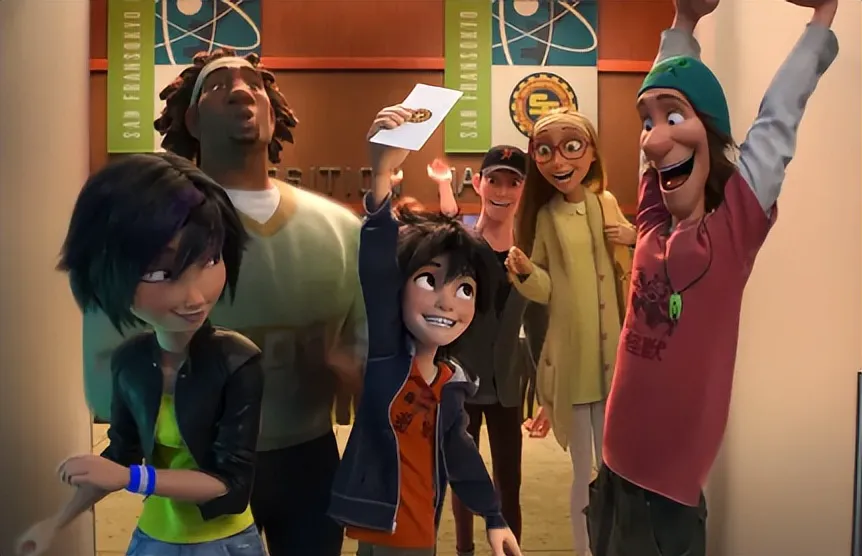
The film’s color palette sets the stage and provides context for the unfolding events. For example, the opening scene depicts San Fransokyo at night, with a beautiful cityscape nestled along a deep blue bay and red billboards reflecting on the water’s surface.
As the camera zooms in, San Fransokyo appears as a dreamlike city, filled with blue hues and a sense of futuristic technology.
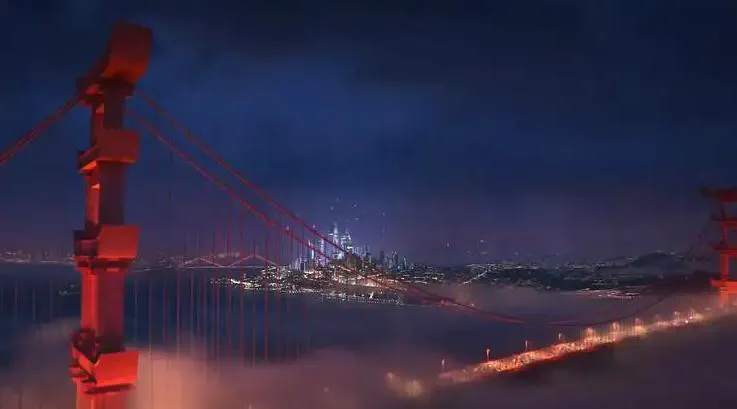
Floating sensors in the sky display a vibrant array of colors – red, yellow, green, and purple – immersing the audience in a visually captivating world.
Visual Impact and Artistic Imagination
The exceptional color design in “Big Hero 6” delivers a significant visual impact and a delightful viewing experience. In animated films, creators must fully realize their artistic vision.
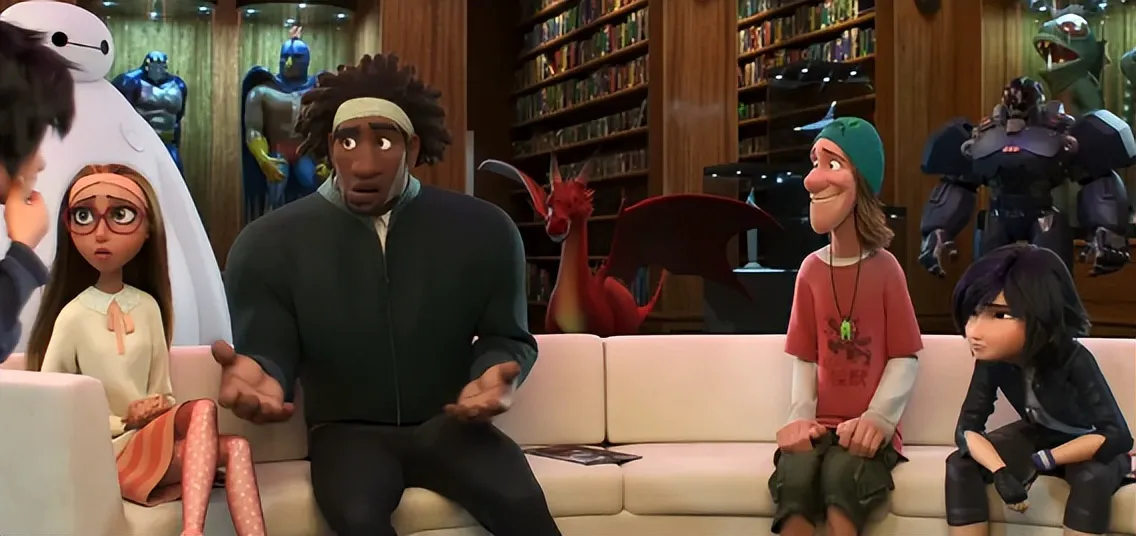
This approach allows animated films to feel more authentic, bridging the gap between reality and fantasy, which is a key element in captivating audiences and driving their appreciation of the film.
For instance, during the robotics exhibition, Hiro and his brother leave the venue and stand near a sapphire-like building. Bathed in the darkness of night, the futuristic architecture creates a magical, dreamlike atmosphere.
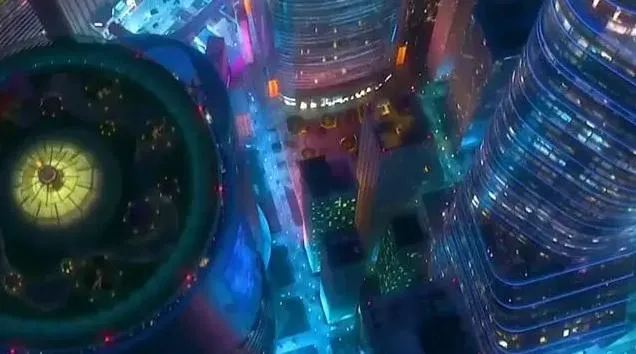
As Hiro chats with his brother, a fire erupts at the exhibition, engulfing the building in flames and contrasting sharply with the earlier blue hues.
The film also captures the beauty of the city and sky as Hiro, riding Baymax in his red armor, soars through the air, bathed in golden sunlight with a reddish tint in the clouds.
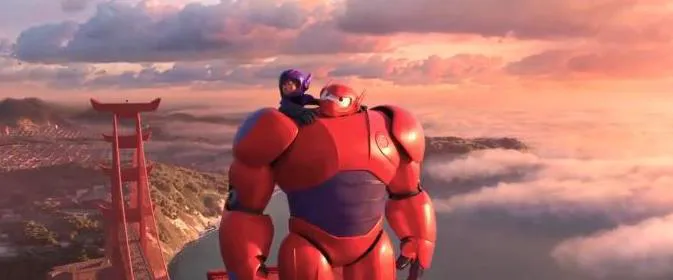
This scene is incredibly dreamlike and captivating, allowing Hiro to momentarily forget his mission to find the microbot thief and immerse himself in the joy of flight.
The Relationship Between Color and Character Development
With the rapid advancement of information technology, science fiction films have become increasingly popular. However, many sci-fi movies tend to follow a formulaic approach in terms of plot, character design, and values, making it difficult to create truly innovative works.
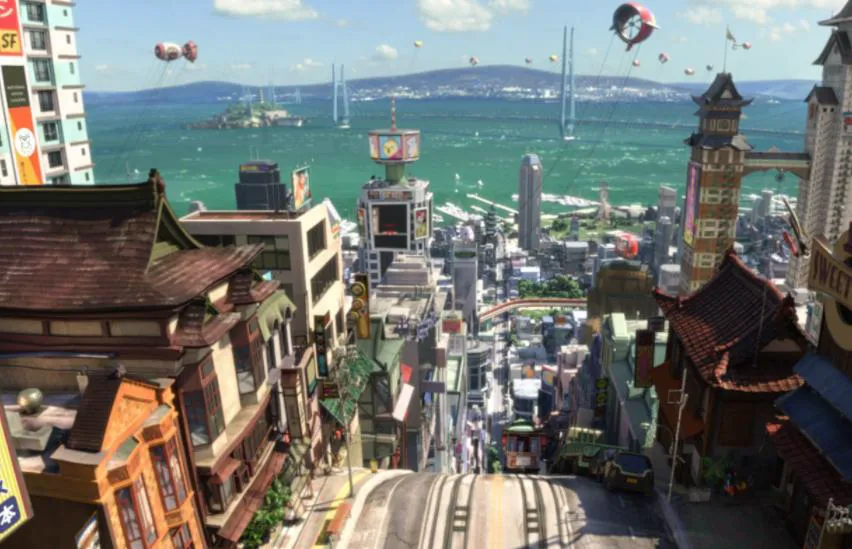
“Big Hero 6” stands out as a successful example of character and scene design within the sci-fi genre.
One of the key elements that draws audiences to “Big Hero 6” is its use of color. Color is a fundamental element in filmmaking, and its skillful application can ensure that characters are distinctive and artistically compelling. Without color, characters would lose their vibrancy.
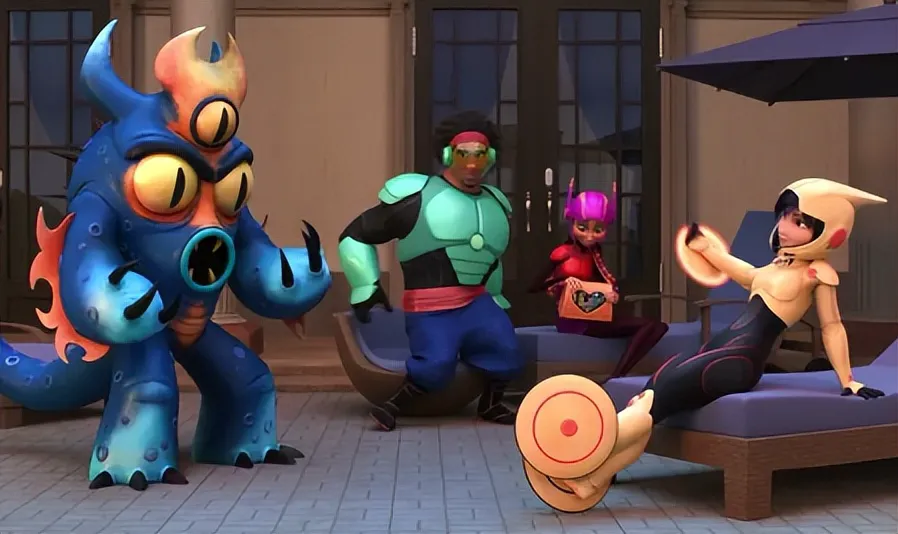
Character Color
Hiro Hamada, the protagonist, exudes a comfortable and natural vibe, which is closely tied to his color design. As a child prodigy, Hiro makes a strong impression during the robot fights at the beginning of the film. His initial outfit reflects a maturity beyond his years.
However, his red t-shirt reminds the audience that he is still a child, highlighting his innocence, playfulness, and energy. He wears this outfit until he dons his superhero suit.
Hiro’s battle suit is primarily purple with red accents.
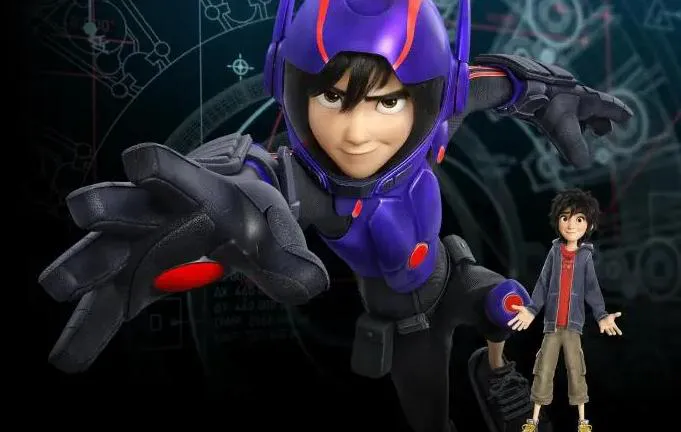
Baymax, the lovable robot, is a fan favorite. His color and design are among the film’s most outstanding features.
As a healthcare robot, Baymax’s white exterior is fitting. Doctors and nurses in hospitals often wear white coats, aligning with the real-world image of healthcare professionals. This design choice reinforces Baymax’s identity as a medical robot.
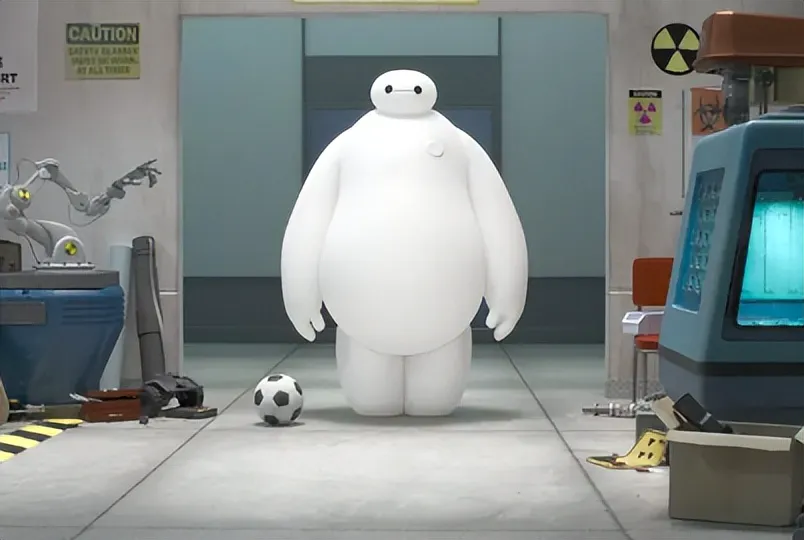
Additionally, the scarcity of pure white objects in nature, combined with Baymax’s large size, makes him even more noticeable. Baymax undergoes several transformations throughout the film. Hiro installs a karate program, and Baymax receives a corresponding suit.
The suit change is a transition, foreshadowing Baymax’s heroic actions later in the film.
Baymax in his red battle suit, alongside Hiro, becomes a powerful ally with rocket fists and the ability to fly. The red suit not only provides visual appeal but also embodies Baymax’s selfless dedication.
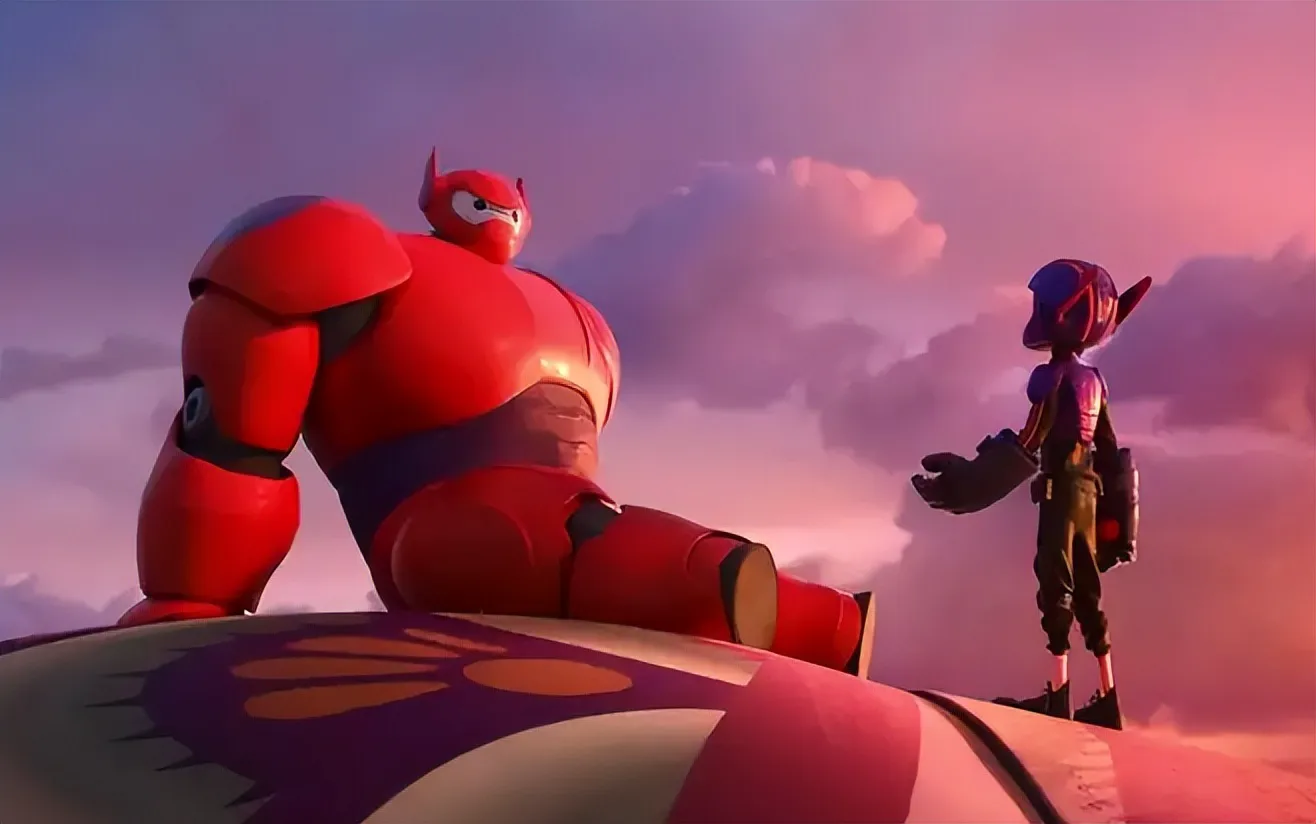
The supporting characters also feature excellent color design.
Professor Callaghan, for example, initially appears wearing a green sweater and a blue shirt, conveying a tech-savvy image. Later, he is seen in a gray sweater and a red shirt, creating a warm, fatherly impression.
He sternly warns Hiro against selling the microbots to Krei, who only cares about personal gain, projecting an image of someone who upholds justice and world peace.
Finally, when Callaghan appears in black clothing and a white mask, he transforms into a father seeking revenge for his daughter, driven by self-interest. This demonstrates how color can be a powerful tool for shaping character.
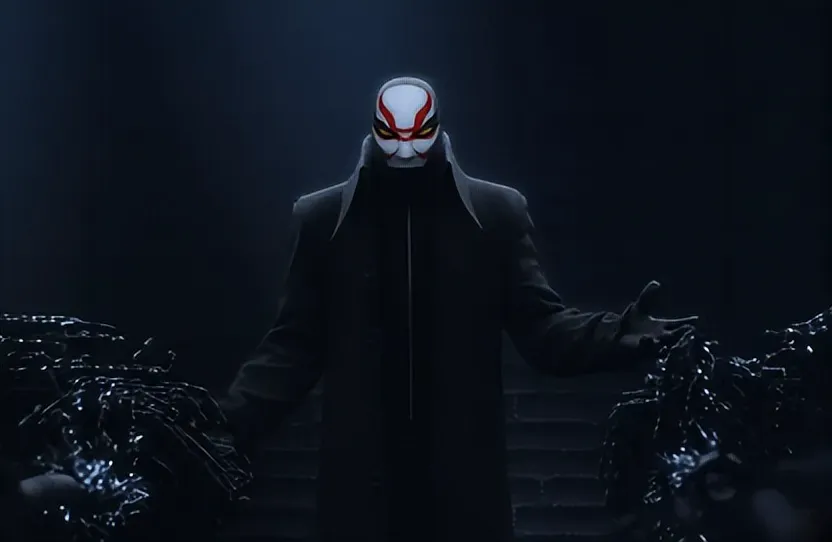
The Commentary of Color
Color plays a significant role in “Big Hero 6.” The director skillfully integrates color into the characters, their traits, and the scenes, making the film more vibrant and engaging. This is evident in two main aspects:
First, the film primarily uses warm colors. Warm colors have strong symbolic meaning, representing the enduring presence of kindness and love, which provide strength and guide people in the right direction.
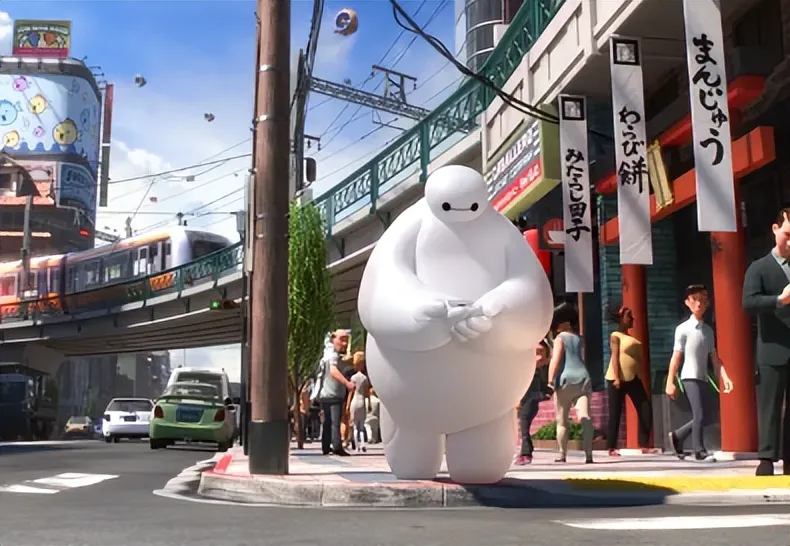
Second, the filmmakers use different colors to express their attitude toward good and evil.
Callaghan’s green sweater and blue shirt, combined with his silver hair, create the image of a scholar. However, when he becomes a vengeful figure, his black clothing and white mask convey a sense of mystery and terror. The changing colors reflect Professor Callaghan’s gradual transformation from good to evil.
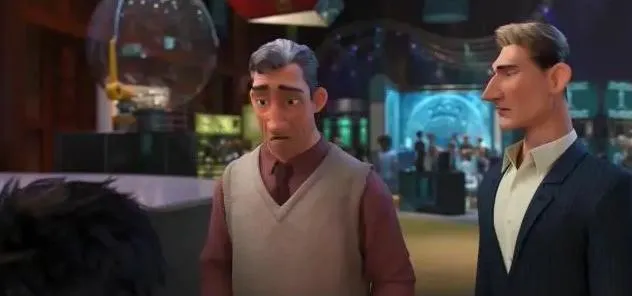
Conclusion
Overall, “Big Hero 6,” with a豆瓣 score of 8.7, boldly uses color to enhance its artistic and aesthetic value. Color is a universal language.
Whether in scene design or character development, color plays a significant role, providing a strong visual impact and allowing audiences to experience a rich and unique visual feast.
